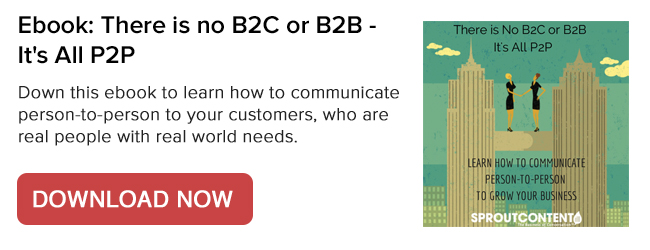When Periscope, the live streaming video app, came out earlier this year with the hefty support of its newly connected parent company, Twitter, everyone in the marketing world had to pause to take notice.
In some cases, we stopped there, labeling it yet another flash-in-the-pan flavor of the month social app. But others of us dipped our toes in the live streaming waters and still others jumped in feet first.
Now it’s been a few months and we’ve seen plenty of examples of how both individuals and brands are using Periscope, so it’s time to take a long hard look at this app and the bigger live streaming video sensation, and ask ourselves: is this going to be a thing, or not?
Live Streaming Video Is Definitely a Thing, and Periscope Is Leading the Way
While live streaming video has been around for a few years already, the launch of the Meerkat app to immediate popularity in March of 2015. Just a few weeks later, Twitter announced its $100 million acquisition of Periscope, a similar live streaming app with a few functional differences.
With the marketing power of Twitter behind them, and the crippling fact that Twitter blocked access to their social graph for the Meerkat app just weeks after its launch, Periscope has quickly grown to be the more popular choice. Other live streaming video apps exist, but Periscope is the clear market leader at the moment with Meerkat a distant second.
According to an infographic released recently by Salesforce, Periscope boasts over 10,000,000 users, more than that many individual posts, and impressions of well over 100 billion (as of August 19th, 2015.)
But, for marketers, vanity metrics are only one small part of the picture. After all, plenty of those 100 billion impressions were probably loud barroom conversations, snippets of mediocre live music, and illegal pirating of copyrighted content. What have brands actually been able to do with Periscope?
Examples of Brands Who Are Doing Periscope Right
Early adopter brands on Periscope included some heavy hitters, like Red Bull, Target, Mountain Dew, and General Electric. These and many other brands have experimented with live streaming for all manner of uses, including:
- Behind the scenes glimpses
- Special live event broadcasts
- Product releases
- Interviews with celebrities/spokespeople
- Contests and rewards
Spotify
Spotify, a leading streaming music app – has taken to Periscope early on to broadcast exclusive performances of guest musicians they have in-studio on a regular basis, including Little Mix (pictured below.)

Discussing their very first Scope (filmed the day the app was launched,) Josh Karph, Spotify’s Global Director of Social Marketing, said, “We had 380 or so live viewers and about 1,500 hearts on the stream," Karph says. "On the replay we had another 200 or so. We’re still looking at how the replay streams work and how quickly they get updated, but it looks like the total is about 450 or 500 people who viewed it.”
Spotify has also turned to Periscope to provide exclusive product announcements like the update made in May to add mood-based playlists and automatic song selection to match your running pace. Their audience has responded with ever-increasing engagement.
Adidas
Adidas used Periscope to give fans an opportunity to watch soccer star James Rodriguez sign his endorsement contract extension with the sneaker maker.

In addition to offering up exclusive behind-the-scenes content and interviews with sports stars, Adidas has also created cooperative Periscope-based events with other accounts. One example is soccer star Leo Messi live streaming a practice session and receiving the newest pair of his signature cleats from the sports shoe manufacturer.
Red Bull
Red Bull is well known in content marketing circles as a leader in brand publishing efforts, and their entrance into Periscope was right in line with their ongoing commitment to creating content experiences. They use Periscope to live stream various live events they host around the world.

Interestingly, as with nearly all their content marketing efforts, Red Bull makes no effort to push their product itself in their use of Periscope. Rather, they’re using it as yet another channel through which to bring together the kind of thrill-seeking, sports-loving, adrenaline junkies who form their core customer base in a fun and entertaining community large and varied enough to keep them fully engaged for a long time.
General Electric
International corporate megabrand General Electric isn’t too large or slow to experiment with new content opportunities. One of the corporation’s most popular early uses of Periscope was a behind-the-scenes interview with popular celebrity scientists Neil DeGrasse Tyson and Bill Nye.
They’ve also done some truly incredible things with cameras on drones providing a bird’s eye view of GE facilities and other interesting sights.

Beyond these examples, many other brands have found success on Periscope as well:
- Fashion mainstay DKNY offers Periscope users a glimpse behind the models and runways and into the “closet” where the real work happens through their “DKNY PR Girl” Periscope account. Retail giant
- Target takes a similar approach by teasing fashion product launches and offering interviews with designers and others connected to popular products.
- Mountain Dew showcased cool new gear on Periscope and rewarded random viewers with free swag.
- Taco Bell created a mock press conference to promote the new Biscuit Taco breakfast product and encouraged viewers to enjoy a free one at their local Taco Bell in celebration of Cinco de Mayo.
- Nestle’s Drumstick brand was the first to experiment with sponsored streams, connecting with early Periscope influencers to create their own content and backing them up with sponsored tweets by Nestle.
- Frito Lay’s Doritos chip brand introduced the app’s first contest, combining Twitter, Periscope, and Vine in support of their Doritos Roulette product launch.
Celebrities like Ellen DeGeneres, Jimmy Fallon, Justin Bieber, and Mariah Carey have also jumped on the bandwagon to offer their fans behind-the-scenes glimpses of life in the limelight.
All these examples show the incredible breadth of options available to brands interested in engaging with a video-hungry audience online.
Where Does Your Brand Fit In?
As marketers, it’s always tempting to grab onto the newest shiny social media object and start touting it as the cure-all for a flagging inbound marketing program. But that’s a trap, and deep down we all know that.
So, when it comes to Periscope for our brands – or any other live streaming video options available – how do we decide how to best use this shiny object, or whether to use it at all?
The Lay of the Land
First of all, it’s important to note that we’re still well within the spitballing stage when it comes to live video streaming. While this post is focused primarily on Periscope as the current category leader where the biggest audience can be found, there are several viable app alternatives that may turn out to be a better option for your particular needs.
Likewise, brands and individuals are still experimenting with use cases for live streaming with varied results. There’s no clear “best practices” yet when it comes to what kind of content resonates best or how to create the ultimate audience for your broadcast. That being said, there are some basic tips that common sense says will make your Periscope experience more accessible and engaging.
The Problem with Testing
While “test, test, test” is always the mantra when skilled marketers are trying to figure out a new strategy and set of tactics, the most effective method for judging what works is still largely lacking on Periscope: quality analytics.
At the end of each broadcast, the app will tell you how many viewers watched, what your retention rate was, the total amount of viewer time you accumulated, and the number of hearts generated, which Periscope uses as a measure of broadcast popularity. But, as pointed out in this snarky post by Thomas Baekdal, those figures are largely misleading.
Thus far, Periscope hasn’t offered up an API, so there’s no way to dig deeper into analytics through a third-party platform. If you choose to utilize the app’s inherent connection to Twitter (which you’d be crazy not to, if your brand has an established Twitter audience) you can get a few additional insights from Twitter’s own analytics, but it’s still fairly limited.
In the end, the raw data you can obtain to base your testing on comes down to how large an audience of viewers you can attract and how much of your broadcast each one of them consumes, on average. The higher the better, of course, although targeting is a different matter entirely.
What’s Next for Your Brand on Periscope?
When you get down to brass tacks, the answer is simple: try it out.
Make sure you’re not doing it just to do it. But at the same time, don’t assume live streaming isn’t right for your brand. Take a deep dive into your content strategy and consider opportunities for humanizing the brand through fun, interesting, and entertaining glimpses into your world. Experiment and have fun!




![4 shopping trends to expect in uncertain financial times [data + how marketers can adapt]](https://53.fs1.hubspotusercontent-na1.net/hubfs/53/consumer-recession-spend.webp)
![The Future Consumer: State of Consumer Trends in 2025 [Data from 700+ Consumers]](https://53.fs1.hubspotusercontent-na1.net/hubfs/53/consumer%20trends%202023-1.png)
![The Top Marketing Trends of 2025 & How They've Changed Since 2024 [Data from 1400+ Global Marketers]](https://53.fs1.hubspotusercontent-na1.net/hubfs/53/Untitled%20design%20(68).jpg)

.png)
![4 Marketing Trends & Strategies That Might Not Survive in 2025 [New Research]](https://53.fs1.hubspotusercontent-na1.net/hubfs/53/marketing%20trends%20that%20might%20not%20survive%202024.png)
![The HubSpot Blog's Marketing Leadership Report: How 720+ Brand Leaders Will Get Ahead in 2025 [+ How to Join Them]](https://53.fs1.hubspotusercontent-na1.net/hubfs/53/Copy%20of%20The%20Future%20of%20Work%20is%20Flexible%20%5BImage%2c%20IG%5D%20(598%20%C3%97%20398%20px)%20(595%20%C3%97%20400%20px)%20(517%20%C3%97%20517%20px).png)
![Top Shopping Trends of 2024 & How They've Changed [New Data]](https://53.fs1.hubspotusercontent-na1.net/hubfs/53/shopping-trends_3.webp)
